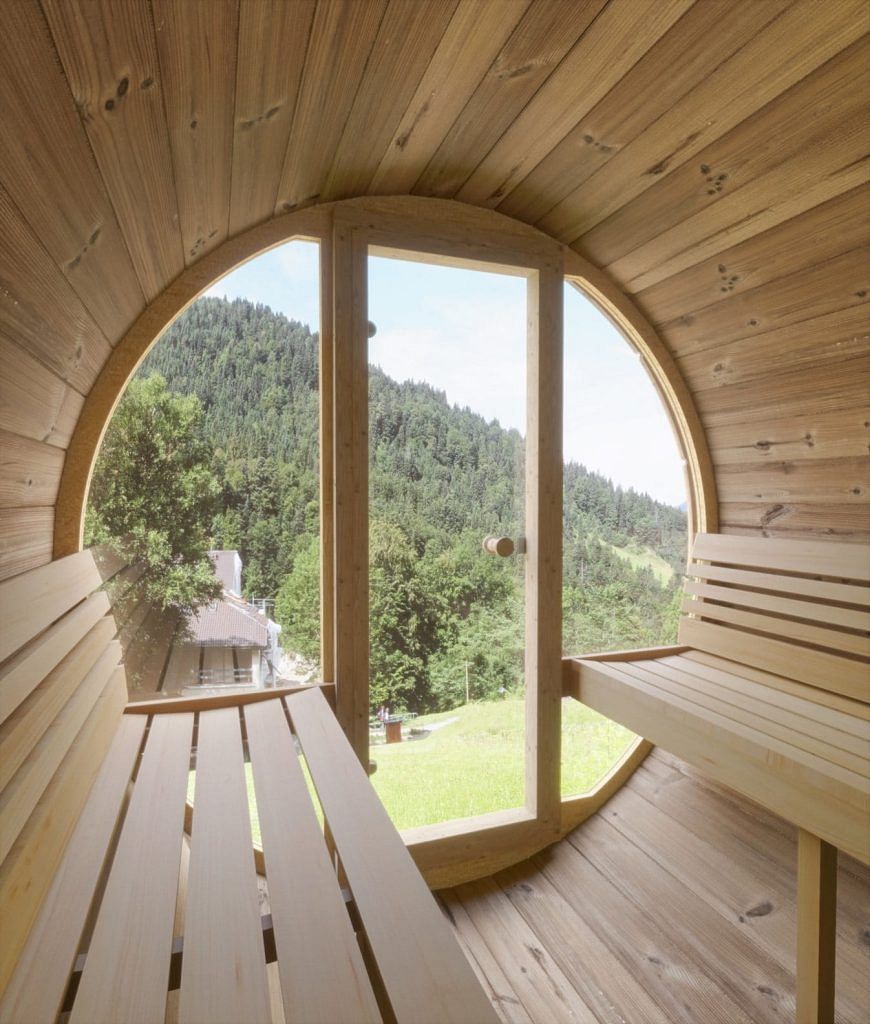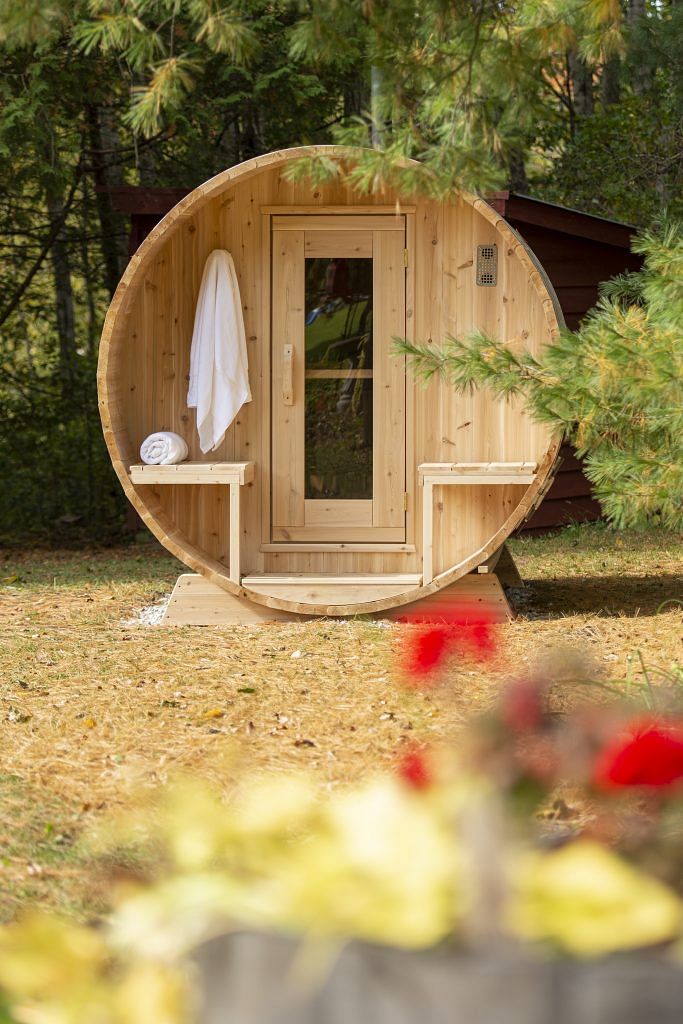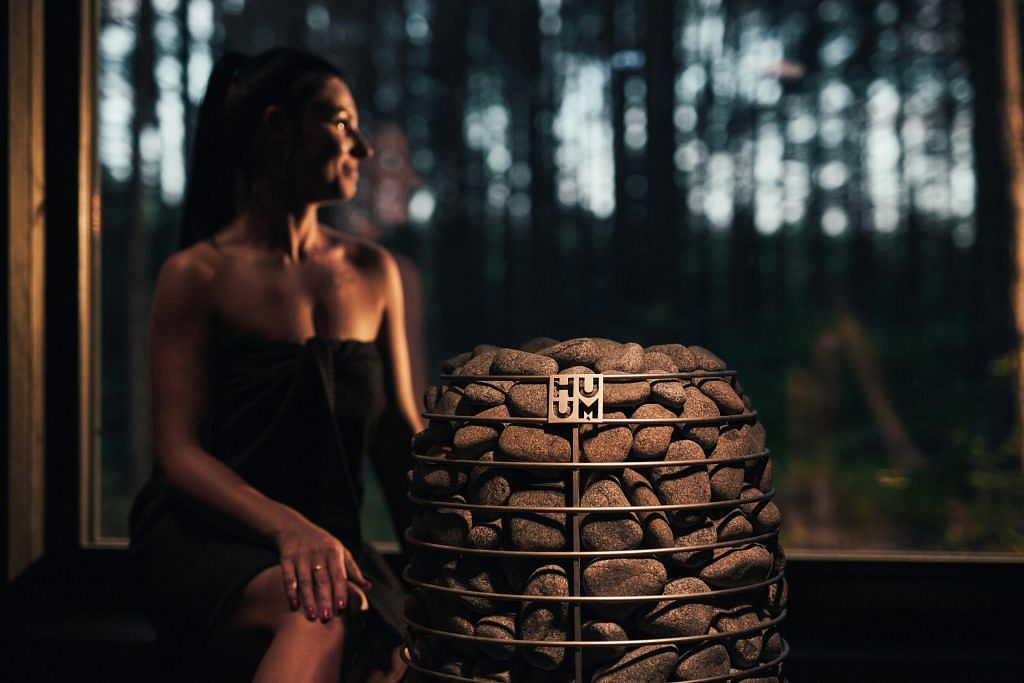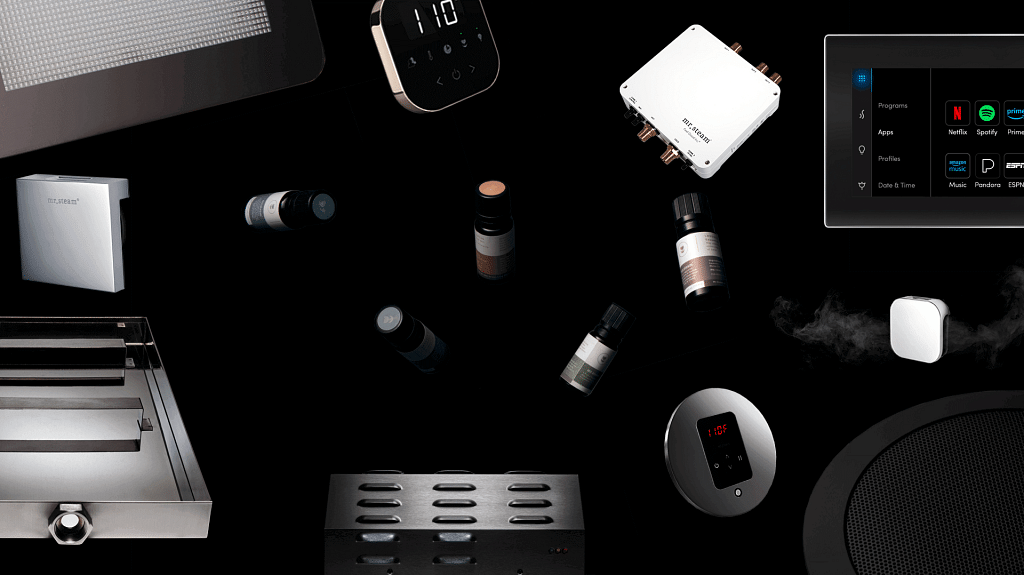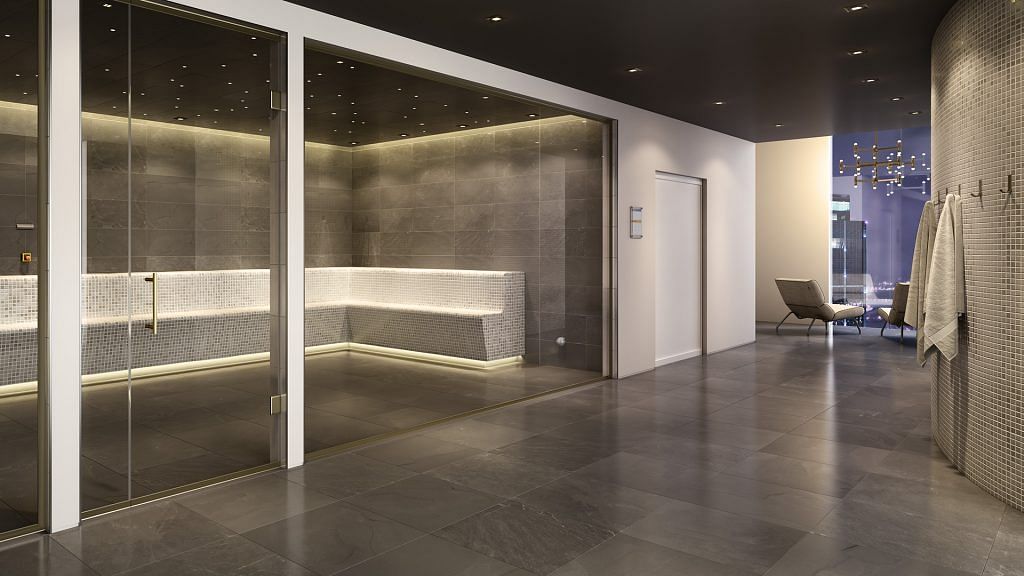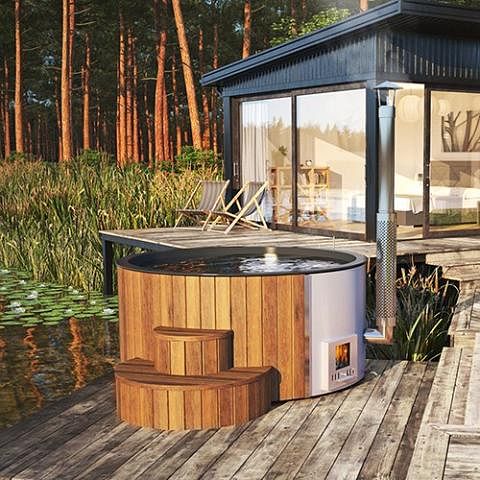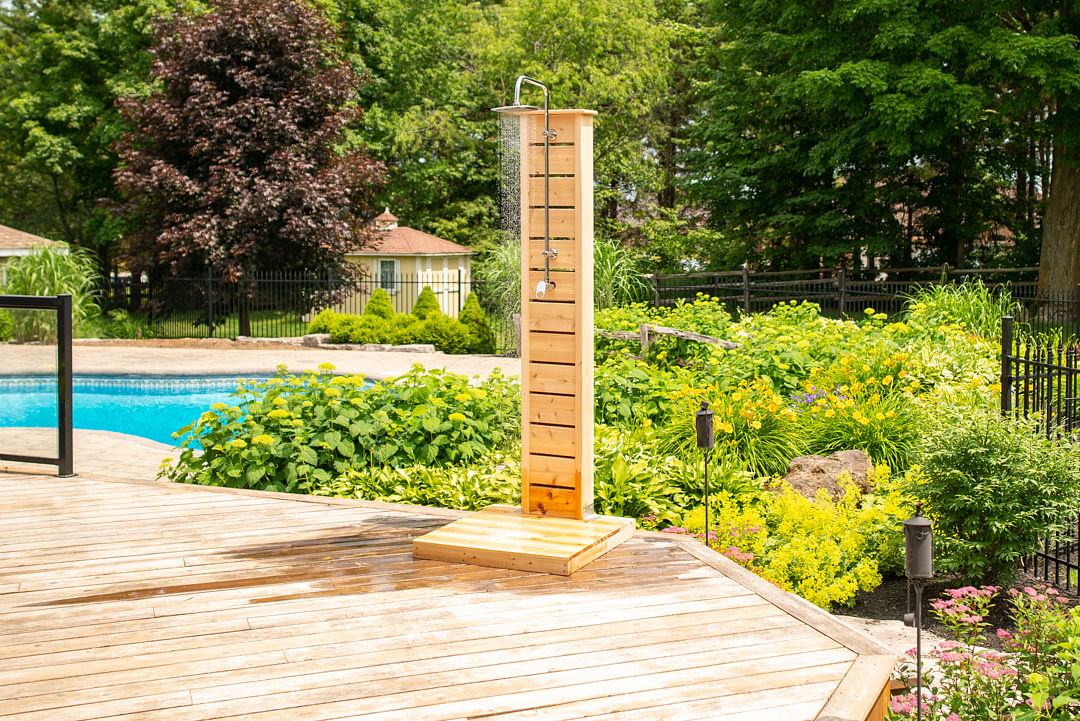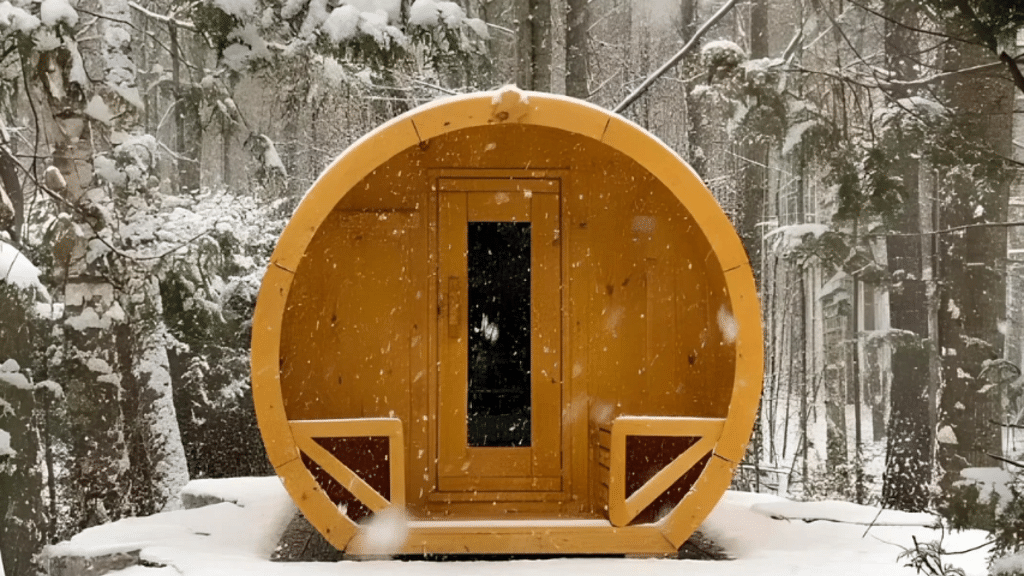Sauna
Hemlock vs Cedar for Your Sauna?
Cedar: A Classic Choice for Saunas
Cedar is a popular choice for saunas, and for good reason. It excels in many of the key factors people consider when selecting wood for their sauna experience.
Heat Resistance: Cedar performs well under the high temperatures (around 195°F to 212°F) typical in saunas. It’s unlikely to warp or crack due to heat, making it a reliable choice for long-lasting durability.
Moisture Resistance: Western red cedar, the most common type used in saunas, boasts natural moisture repellent properties. This helps to prevent the growth of mildew and rot, which is crucial in a constantly damp environment. The wood also dries quickly after use, further reducing moisture concerns.
Insulation: Cedar offers moderate insulation, helping to trap heat inside the sauna and maintain a consistent temperature. While some woods provide slightly better insulation, cedar strikes a good balance between heat retention and breathability.
Comfort: One of the biggest advantages of cedar is its comfort factor. The wood has a low heat transfer rate, meaning it feels warm to the touch without becoming uncomfortably hot, even at high sauna temperatures.
Aesthetics: Cedar boasts a beautiful reddish hue with natural variations in tone. It has a pleasant, aromatic scent that many find appealing in a sauna setting. There are also clear and knotty grades available, allowing you to choose the aesthetic that best suits your taste.
Disadvantages to Consider: While cedar offers many advantages, there are a few things to keep in mind. Compared to some other sauna woods, cedar might require more frequent maintenance, such as occasional light sanding to remove any surface roughness that can develop over time. Additionally, some people may find the initial cost of cedar to be slightly higher than other options.
Overall, cedar is a versatile and reliable wood for saunas. It offers excellent heat and moisture resistance, provides a comfortable experience, and boasts a beautiful aesthetic. If you’re looking for a classic sauna experience with a pleasant aroma, cedar is a strong contender.
Hemlock: A Light and Stable Choice for Saunas
Hemlock is another popular wood for saunas, offering a unique set of advantages.
- Heat Resistance: Hemlock performs well in high sauna temperatures. It’s known for its exceptional heat retention properties, ensuring the sauna maintains a consistent and comfortable warmth. While it excels at heat resistance, some woods, like cedar, might offer slightly better performance in extremely high-heat saunas.
- Moisture Resistance: Hemlock is naturally resistant to moisture and warping, making it suitable for the humid environment of a sauna. When properly kiln-dried, it dries quickly after use, further reducing the risk of mold and mildew growth.
- Insulation: Hemlock provides good insulation, helping to trap heat inside the sauna and maintain a consistent temperature. This translates to efficient heating and a longer-lasting comfortable experience.
- Comfort: Hemlock is known for its smooth and even texture, pleasant to the touch even at high temperatures. It avoids feeling excessively hot on bare skin.
- Aesthetics: Hemlock boasts a light straw color with a clean and modern aesthetic. This lighter tone can create a bright and airy feel in your sauna space. Hemlock is also relatively easy to stain or paint if you desire a different look.
Things to Consider: While hemlock offers many benefits, there are a few points to keep in mind. Compared to cedar, hemlock might require slightly more maintenance in the form of occasional cleaning and re-application of a sealant to maintain its light color. Additionally, some may find the initial cost of cedar to be slightly lower.
Overall, hemlock is a strong choice for saunas, particularly for those who value a lighter aesthetic and excellent heat retention. It provides a comfortable and durable experience for years to come.
Choosing the Right Wood: Cedar vs. Hemlock
Selecting the perfect wood for your sauna depends on your priorities. Both cedar and hemlock offer excellent durability and performance in high heat and humidity. Here’s a quick breakdown of their key characteristics:
Cedar:
- Classic choice with a beautiful reddish hue and aromatic scent.
- Excellent heat and moisture resistance.
- Comfortable to touch at high temperatures.
- May require occasional sanding for continued smoothness.
- Initial cost might be slightly higher.
Hemlock:
- Light-colored wood with a clean, modern aesthetic.
- Exceptional heat retention properties for consistent warmth.
- Naturally resistant to moisture and warping.
- Smooth texture, pleasant to touch at high temperatures.
- May require occasional cleaning and sealant reapplication for a lighter look.
- Initial cost might be slightly lower than cedar.
Ultimately, cedar provides a more traditional sauna experience with its unique aroma, while hemlock offers a lighter and airier aesthetic with excellent heat retention. The table below provides a quick comparison of these key features:
|
Feature |
Cedar |
Hemlock |
|
Heat Resistance |
Excellent |
Excellent |
|
Moisture Resistance |
Excellent |
Excellent |
|
Insulation |
Moderate |
Good |
|
Comfort (Touch) |
Pleasant |
Pleasant |
|
Aesthetics |
Rich reddish hue |
Light straw color |
|
Maintenance |
Occasional sanding |
Occasional cleaning & sealant |
|
Initial Cost |
Slightly higher |
Slightly lower |
By considering these factors and the table above, you can make an informed decision about the best wood for your dream sauna.
The decision between hemlock and cedar for your sauna is a tough one since there are a lot of points of differences. In our page you will see a full guide.

